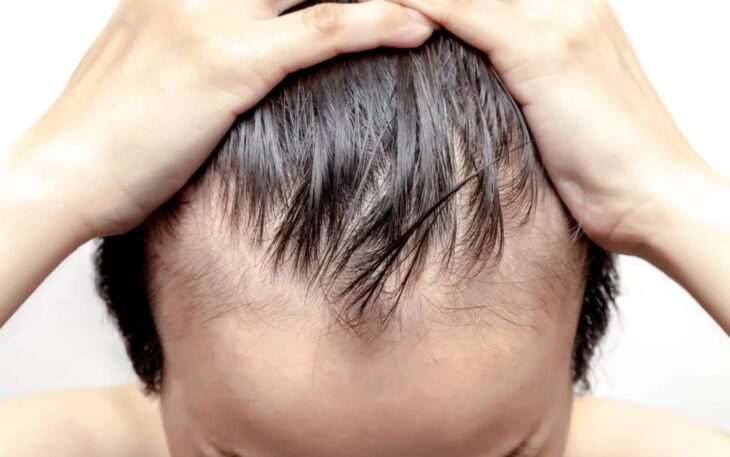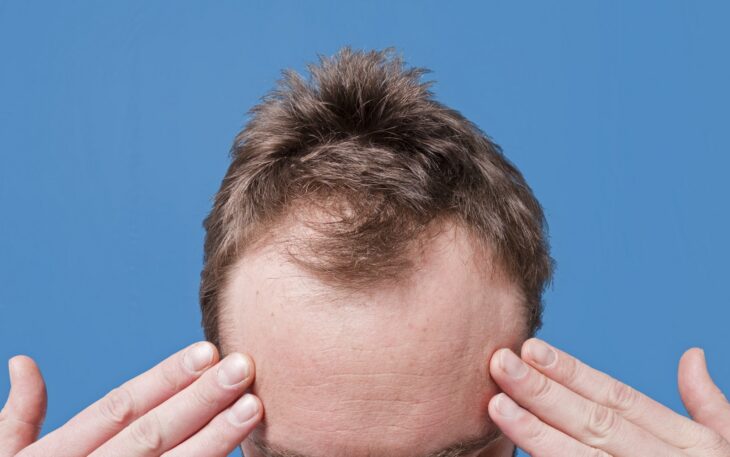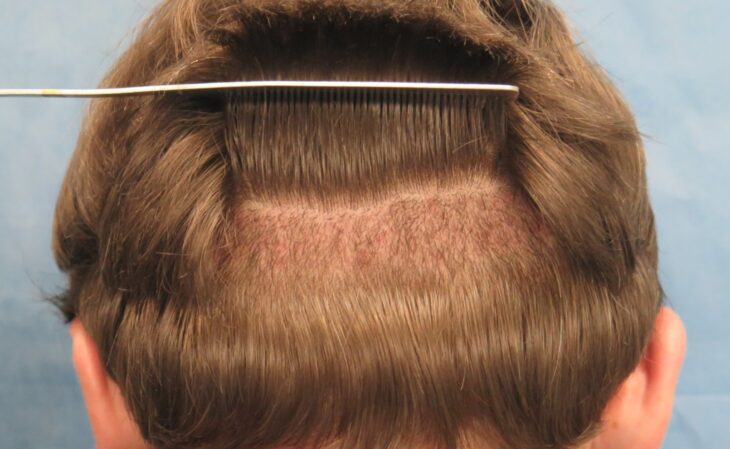Baldness in men, also known as androgenetic alopecia, is the gradual disappearance of hair from a man’s scalp. Baldness occurs commonly in older men, but some men are known to experience it as early as in their 20s.
The average man is predisposed to going bald as he gets older and experiences a drop in hormonal levels, but this takes nothing away from how psychologically distressing it is.
Millions of men across the globe suffer from hair loss or male pattern baldness caused by a combination of genetics and a hormone known as dihydrotestosterone (DHT). Hair loss begins with a systemic reduction in hair follicles on the scalp and hair continues to reduce in length until they finally disappear. Going bald can sometimes be a pointer to underlying health issues, too.
Due to the anxiety or near-depression that many men can experience as a result of hair loss, it’s understandable that so many of them seek treatment for it. For the best hair loss treatments to suit you and your lifestyle, as well as a look at the most popular options for hair loss treatment, read on.

Source: Hairpieces for men UK
Contents
Causes of Baldness
Baldness is more often caused by age and a decline in hormone levels in the body. In a sample of 100 Caucasian men, 50 of them would have gone bald by the time they reach 50 years of age, while another 30 would become bald as they hit 70.
In some other cases, genetic factors are responsible for it. Where a man has members of his immediate and extended family going bald, chances are that he will most certainly suffer from baldness himself.
1. Remedies for Baldness

Source: Young Men’s Health
Although many people do not consider treatment for baldness as a procedure they would want to have, a few suffer from depression and low self-esteem when they realize that what was a significant part of their identity or appearance is taken away from them.
Baldness can be treated or reversed by the use of drugs, hair transplants, lifestyle changes, and special shampoos.
2. Shampoo treatment

Source: Reviewtiful
The use of shampoo is straightforward and does not require a prescription from your trichologist. The products used are:
- Head & Shoulders, which contains 1% of Pyrithione zinc
- Nizoral, which contains 2% Ketoconazole.
3. Use of medications

Source: Bock Integrative
Baldness can be treated using Finasteride or Minoxidil.
Finasteride is taken orally and requires a prescription by any health professional to be purchased at your nearest pharmacy. It is a 5-Alpha Reductase Inhibitor and works by inhibiting the production of dihydrotestosterone (DHT), a hormone that plays an important part in the shrinking of hair follicles. Treatment is reversible and requires consistent use for more than three months before the results are visible. It must be taken once daily during the period.
Adverse effects of using Finasteride include skin rash, reduced libido, and other sexual related challenges (although this is very rare), dizziness, headaches, diarrhea, pains in the stomach and back, inflammation of lips/tongue/face, and even breast enlargement and tenderness.
Minoxidil, unlike Finasteride, is applied to the skin. It comes in a foam/lotion and can be purchased over the counter at your pharmacy. It is used by applying it to the scalp. It was something of an accidental discovery – it was originally used to treat high blood pressure before it was discovered that it also works for hair growth. Minoxidil requires continuous use to sustain hair growth and must be used for three to six months before results are noticeable.
The adverse effects can include itching and irritation of the skin, swelling, contact dermatitis, sensitivity, and other skin problems. Rarer effects include facial numbness, accelerated weight gain, headaches, irregular heart palpitations, chest pain, lightness of the head, flushing, and blurred vision.
4. Hair Transplants

Source: Bernstein Medical
This treatment process is called hair transplantation, where hair strands or strips of skin are sourced from somewhere else and grafted to the affected scalp area. It works because the hair or strip of grafted skin is taken from a part of the body that is resistant to the hormones responsible for the shrinking of hair follicles.
Surgery can also involve transplanting individual hairs. This does not create scars.
Of all the treatments available, only a hair transplant is capable of growing new hairs. You can either transplant strands of hair to the affected area or take a strip of skin unaffected to transplant to the area. It is an expensive surgery, one mostly not covered insurance.
Turkey is one of the top destinations for hair transplant procedures because costs are generally low and because of the concentration of hair-transplant experts in the country. If you are considering such a treatment, it’s best to check a site such as gethair.co.uk to find out the cost of hair transplant in Turkey before committing to it.
5. Lifestyle choices

Source: Shutterstock
Certain habits like drinking alcohol, smoking, and other conditions such as diabetes and being overweight can be responsible for hair loss. You are at a lesser risk of losing your hair if you adopt a healthy diet, stop consumption of alcoholic drinks, and begin to take up physical exercise.
It’s best to start hair loss treatment the moment you notice your hair has started falling out because it’s easier to prevent hair loss than it is to regrow hair. Also, avoid anyone selling medicine or offering treatment for hair loss if they are not registered with an appropriate medical body. Generally, these treatments will simply not be effective, and in some cases, the content of such drugs could be dangerous.
In the end, you have the following options: change your lifestyle habits, removing the ones that are responsible for hair loss; use medications, or opt for surgery. Surgical treatment is usually the best option when all attempts to revive natural hair growth have proven unsuccessful. The operation is performed under local anesthesia and is perfectly safe.
Some men are known to have opted for toupees/wigs, or even taken the drastic measure of shaving all their hair off! Whichever option you choose, be sensible, and choose the right one for you, and the one that suits you best.
